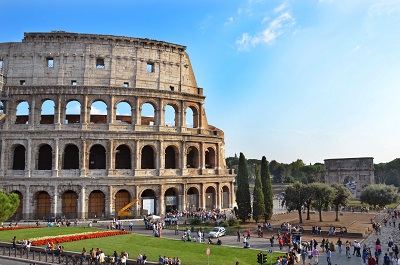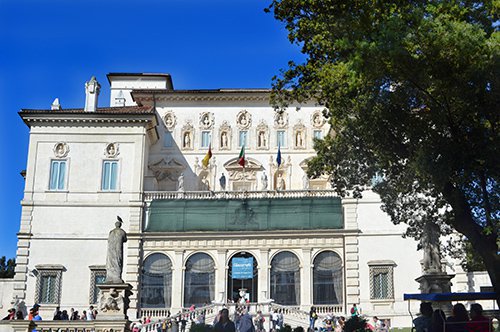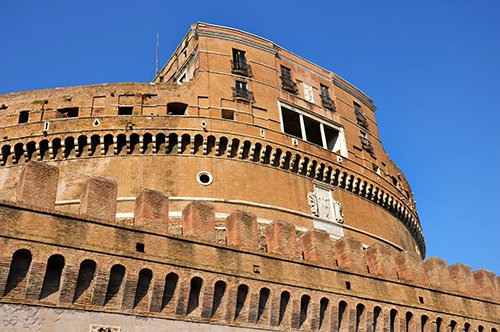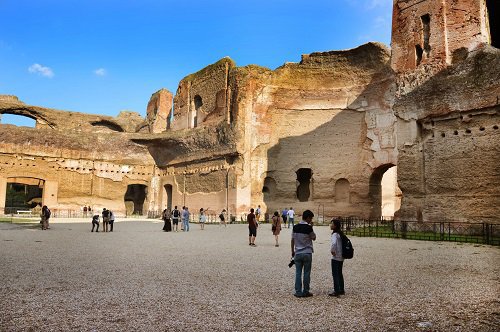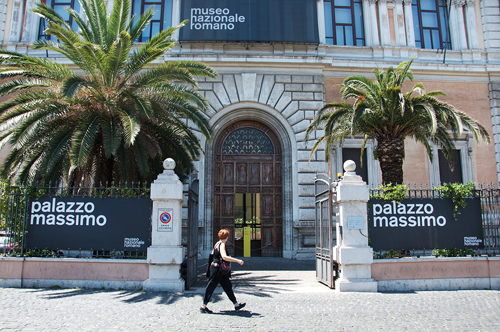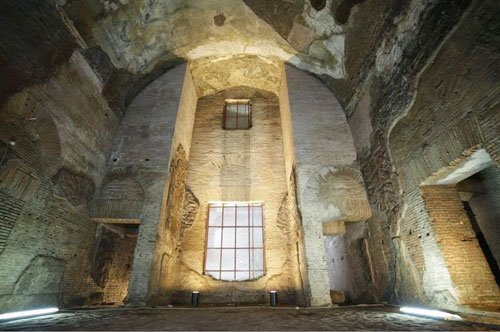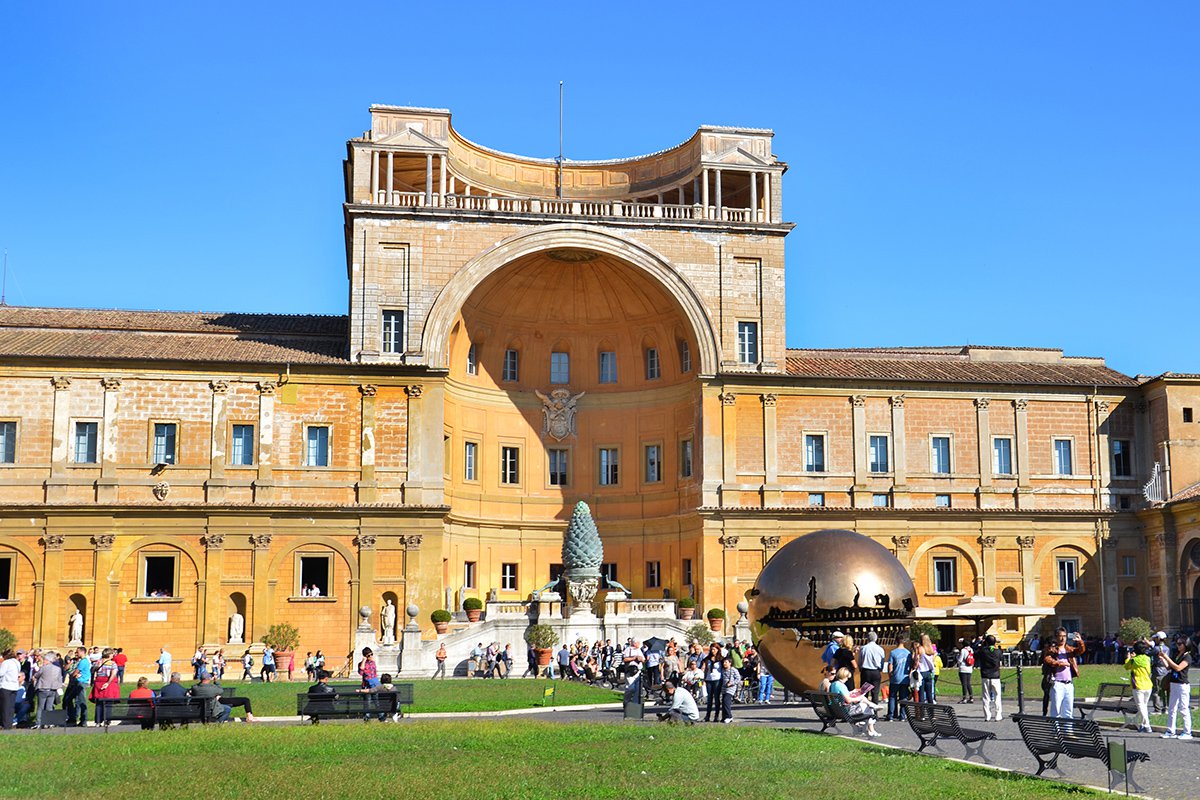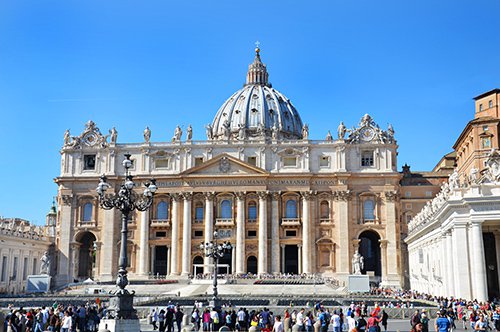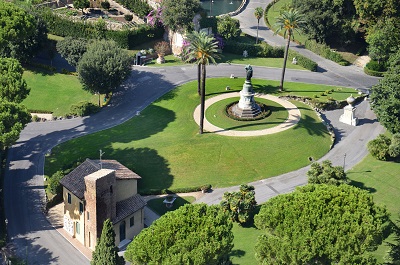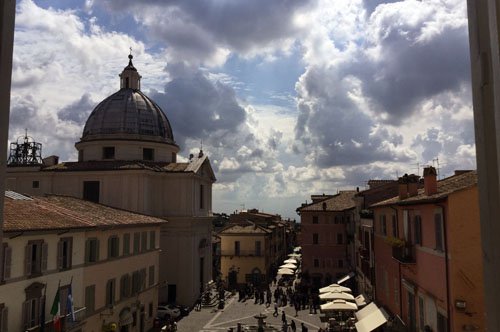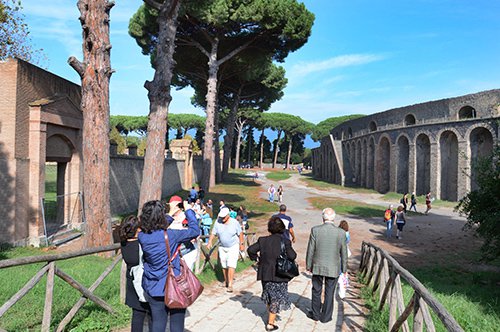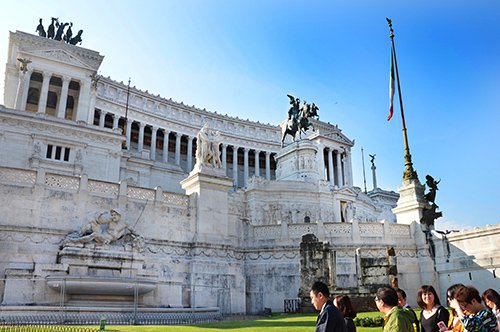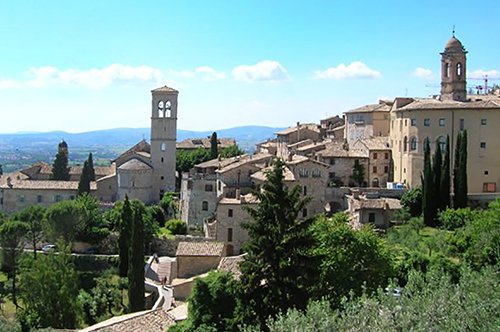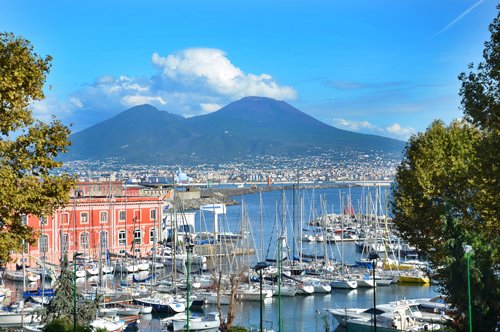National Roman Museum
All Categories
Tickets
Guided Tours
Private Tours
WHY VISIT THE NATIONAL ROMAN MUSEUM
A visit to the Baths of Diocletian offers not only access to the museum itself, but also the chance to admire the impressive Aula X, featuring the Tomb of the Platorini and two tombs from the Via Portuense Necropolis. At the Crypta Balbi, you can explore the history of the site from ancient times to the present day and discover how Rome transformed from late antiquity through the medieval era. Palazzo Massimo showcases a remarkable collection of classical art, including sculptures, frescoes, mosaics, and coins, while Palazzo Altemps displays a range of Greek and Roman sculptures from the 16th and 17th centuries, originally owned by noble Roman families. If you are passionate about archaeology and the history of ancient art, the circuit of the National Roman Museum will give you the perfect opportunity to deepen your studies and expand your knowledge in this fascinating field.
A BRIEF HISTORY OF THE NATIONAL ROMAN MUSEUM
The National Roman Museum was established in the late 19th century to safeguard and exhibit works connected to the city of Rome, focusing on items from the 5th century BC to the 3rd century AD. It brought together the collections of the Kircherian Museum and Villa Ludovisi, along with archaeological finds from across Rome. The museum’s original headquarters were within the Baths of Diocletian, set in the cloister of the Basilica of St. Mary of the Angels and the Martyrs. By the late 1900s, the museum expanded to new locations, including Palazzo Massimo, Palazzo Altemps, and Crypta Balbi.
WHAT IS THE NATIONAL ROMAN MUSEUM TODAY?
Today, the National Roman Museum is an archaeological museum spread over four sites, organized by the City of Rome’s Superintendency of Archaeological Heritage. You can visit all four locations—Palazzo Massimo, Palazzo Altemps, Crypta Balbi, and the Baths of Diocletian—with a single ticket valid for three days. Palazzo Massimo, designed by architect Pistrucci in the late 1800s, features collections of coins, jewelry, and ancient art. Palazzo Altemps, built in the 15th century by the Riario family and located near Piazza Navona, houses the Egyptian collection and contains a historic theater currently used for temporary exhibitions. The Crypta Balbi serves as an archaeological laboratory, hosting restoration, archiving, and research activities, and is connected to the Balbus Theater complex. It houses exhibitions on urban archaeology and Rome’s transformation from antiquity to the Middle Ages. The Baths of Diocletian, built around 300 AD and located between Piazza della Repubblica, Piazza dei Cinquecento, Via Volturno, and Via XX Settembre, now contain the epigraphic and protohistoric sections; outside, you can stroll through the beautiful gardens.
INTERESTING FACTS ABOUT THE NATIONAL ROMAN MUSEUM
Did you know that Palazzo Altemps is named after Cardinal Marco Sittico Altemps, who resided there beginning in 1568? The sculptures displayed inside come from historic Roman family collections like those of the Ludovisi, Mattei, and Del Drago. The roof is adorned with a rampant ibex, the Altemps family symbol. Also, the Baths of Diocletian, constructed between 298 and 306 AD, were the largest bathing complex ever built in Rome. They covered 13 hectares and could accommodate as many as 3,000 people, with facilities including libraries, gyms, a massive 3,500-square-meter swimming pool, and the traditional Roman baths: the frigidarium, tepidarium, and caldarium.
HOW TO VISIT THE NATIONAL ROMAN MUSEUM
You can visit the National Roman Museum by purchasing tickets online. We recommend booking the combined ticket, which is valid for three days so you can explore all four venues: Palazzo Massimo, Crypta Balbi, Palazzo Altemps, and the Baths of Diocletian.
OTHER ATTRACTIONS
While exploring the four sites of the National Roman Museum mapped across Rome, you can also visit many other historic and cultural landmarks, such as Piazza di Spagna with the iconic Spanish Steps of Trinità dei Monti, Piazza Navona with the Fountain of the Four Rivers at its center, and the famous Trevi Fountain. Close to Palazzo Altemps and Piazza Navona, you'll find the Colosseum, the Palatine Hill, and the Roman Forum. From the Colosseum, it's an easy walk to Nero’s Domus Aurea. Palazzo Altemps lies directly across the Tiber River from Castel Sant’Angelo and Vatican City, where you can admire St. Peter’s Basilica and the unparalleled treasures of the Vatican Museums, including the Sistine Chapel frescoes and the Vatican Gardens. The Crypta Balbi is near the Capitoline Museums, and if you wish to continue your discovery of ancient Rome, you can visit archaeological sites like the Baths of Caracalla, Villa dei Quintili, the Catacombs, the Pantheon, and the Ara Pacis. For art enthusiasts, the magnificent Borghese Gallery is a must-see, as is Villa d’Este in Tivoli, just outside Rome. About half an hour from the city, you can also visit the charming town of Castel Gandolfo, the Pope’s summer residence.



